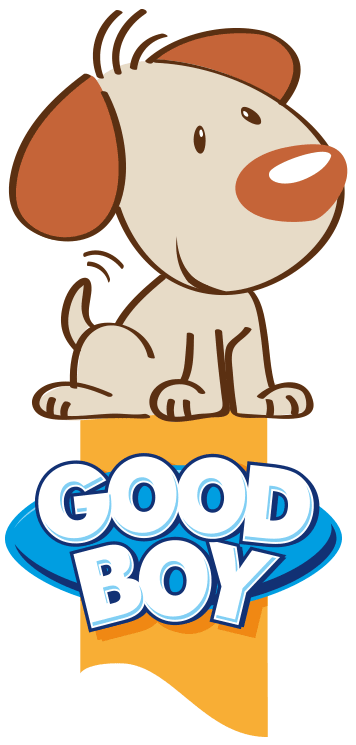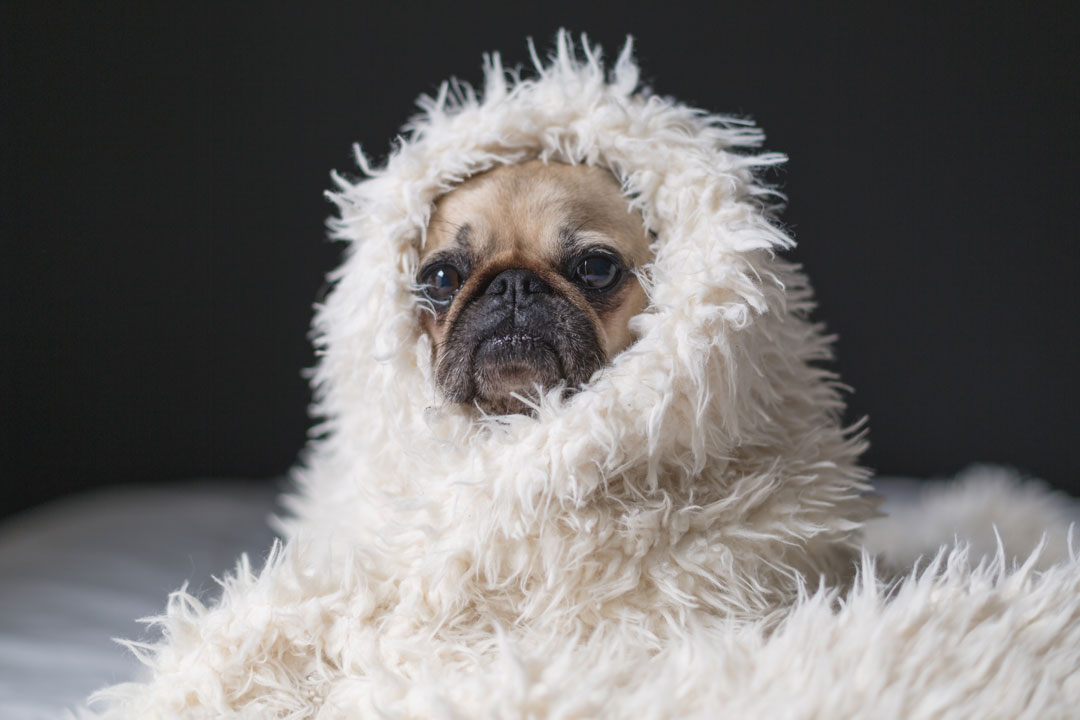Your newest addition to the family might look like an angel, but before you know it they’ll be into everything! From muddy puddles to spilt drinks, there are all kinds of ways your fur-baby might end up with a sticky coat. So, how do you bathe a puppy?
It may sound simple, but when it comes to wriggly little puppers – nothing is simple! While some pups are natural waterbabies, others might not enjoy the experience quite so much. With proper planning and a few nice touches, you can help your new best friend get used to something that – let’s face it – could end up being a regular occurrence. Without the right preparation, though… it could be carnage!
Learning how to properly bathe a puppy is key to making it as enjoyable as possible – for both of you. Here are our top tips and a step-by-step guide.
How frequently should I bathe my puppy?
Doggos do clean themselves, so how often do you really need to bathe them? Well, that depends on lots of different things, like the type of coat they have, what it is they have rolled in and whether or not they enjoy it! Fortunately, doggos aren’t like human babies, so you don’t need to bathe them once a day, or even once a week. In fact, puppies under three months old shouldn’t be bathed at all – just use a warm, wet cloth if they get mucky and make sure you dry them gently with a soft towel and keep them nice and warm inside the house afterwards, as they are prone to getting cold very quickly.
With older puppies, start with once a month as a rule of thumb, and add in extra baths if they get mucky (particularly if they have long, thick fur that collects mud), or reduce them if they seem clean and sweet smelling for a little longer! If your pupper seems to get dry skin after a bath, switch to a ‘kind to skin’ shampoo and rinse extra thoroughly.
Where should I bathe my puppy?
This depends on the size and age (or activity level!) of your canine companion. Large puppies or those with thick or long fur will need to be cleaned in the bathroom or, if it’s warm enough, the garden. However, puppies get cold very quickly, so try to do it indoors if you can – and never use water from the hose or an outside/cold tap.
For little puppers, the kitchen sink can work well. However, if they have rolled in something unhygienic it might be wise to use the bathroom instead of a food preparation area!
What do I need for bathing my puppy?
To make it a more enjoyable experience for both you and your puppy, gather everything you need in one place before getting started. Here’s what we recommend:
🐾 Three soft, fluffy towels that are big enough to wrap around your puppy
🐾 A fine puppy comb or brush
🐾A slip-proof mat
🐾 Gentle puppy shampoo (not baby shampoo, as it is balanced for human skin)
🐾 A flannel or sponge
🐾 Optional: jugs of warm water, nail clippers, ear/eye wipes
🐾 Your puppy!
🐾Top tip: start practicing trimming your puppy’s nails early on, or at least touching the trimmers to the nail and rewarding them. Building a positive experience with the clippers will be very useful as your pup gets bigger! You can start trimming their nails from six months old – your vet or groomer can show you how to do this safely.
How to properly bathe a puppy
So you have your supplies – and your puppy! It’s time to begin. Remember to praise and give your pupper treats when they are calm and behaving well, and to ignore any bad behaviour. It might not be much fun for them to be bathed, but telling them off for being naughty will put them off even more!
- Gently brush or comb your pooch’s fur to get rid of any tangles that might get worse during drying.
- Put one of your towels down on whatever surface you’ll be placing your puppy on when they are squeaky clean, and put the slip-proof mat into the sink/bath.
- Fill the tub with warm water – check the temperature by dipping your elbow in, like you would if running a bath for a baby, and ensuring it is just a little warmer than your skin. Fill it till it comes up to their elbows.
- Calmly, and with lots of gentle praise, place your pupper into the water. If she fusses (whining and wriggling), pet and soothe her. You may need to hold your pup just above the water (if she’s small) and use your other hand to spoon water over her back to get her used to it. If she enjoys it, you may have to stop her from splashing too much!
- Use your hands to get your fluffy friend completely wet all over.
- Add a small amount of shampoo (it will say how much on the bottle, but you usually start with a pea-sized amount) and lather it into your pooches fur all over their body, from nose to tail.
- Dip the flannel into the water to wash your pup’s face, avoiding the eyes as much as possible.
- Remove your soapy pup from the tub and wrap in a towel to keep her warm.
- Empty the water from the tub and rinse the suds away.
- Place your pup back in the tub (discard the soapy towel) and use either the shower, a water-sprayer, the tap (if it has both hot and cold water and you can control the temperature well) or jugs of water to rinse the shampoo out. Make sure you get it all, as it can cause irritation otherwise.
- Once the shampoo is gone, smooth your hands over her fur to get rid of the excess water.
- Place her on the towelled surface you prepared in step two; she’ll probably shake herself at this point, so hold a towel over her to protect yourself and your surroundings!
- Wrap her up in the towel and you’re ready for the bit she’s sure to enjoy.
How to dry a puppy after a bath
Make a big fuss of your squeaky clean pupper for their first successful bath! You can continue drying, swapping the towel if it gets too sodden. You can also get super-absorbent drying mitts, which will help you get to those problem areas, such as between the rolls of puppy fat, the inner legs and their stomach. Make sure you get these areas completely dry.
Should I use a hairdryer to dry my puppy?
Not really, no! Most vets advise against this as puppies have very thin, delicate skin and it’s much easier to burn than the hair on your head. There are some exceptions to the rule though, but all of these must be done on a cool setting and by keeping the hairdryer moving.
- If your pupper is a double-coated breed with long hair, you may need to dry the undercoat gently. These breeds may require less frequent bathing and shouldn’t be trimmed, so speak to a groomer if you think that applies to your canine companion.
- If your doggo has very long fur, even if it’s single coated, it might help to give them a little once over so that you don’t tangle the wet fur by towelling for too long.
If your puppy doesn’t like the sound of the hairdryer, it may be easier to take them to a professional groomer, who will have quiet equipment and lots of experience with doggos!
When you think your pup is finally dry, give them another brush/comb – you’ll probably find some spots you missed. Any knots or tangles can also stay wet for much longer, so for long-haired breeds this is a must.
The finishing touches – and post-bath zoomies!
The bathing process is a great time to do an all over check of your furry best friend for any little injuries or marks that you may not otherwise spot. Some breeds may need a little help cleaning around their eyes or ears, particularly if they have lots of little wrinkles, so use your wipes to do this now. You can also trim the nails now, if you’re comfortable doing so – it’s much easier to do when their nails are nice and clean.
🐾Top tip: avoid any fancy products that get left on the coat, such as doggy dry shampoo, as puppies have very sensitive skin. Puppy shampoo and water are the only things you need to get your little one spruced up.
You’ve done it; your puppy is clean and dry – now it’s time to clear some space! Many pups get the post-bath zoomies and will race around the house for the next ten minutes. Keep them inside for this, or they might just end up straight back in the mud!
Now you know how to properly bathe your puppy, and how to dry your puppy after a bath – good luck! It won’t always go according to plan, but with a sense of humour it’s a great opportunity to bond with your canine companion.



